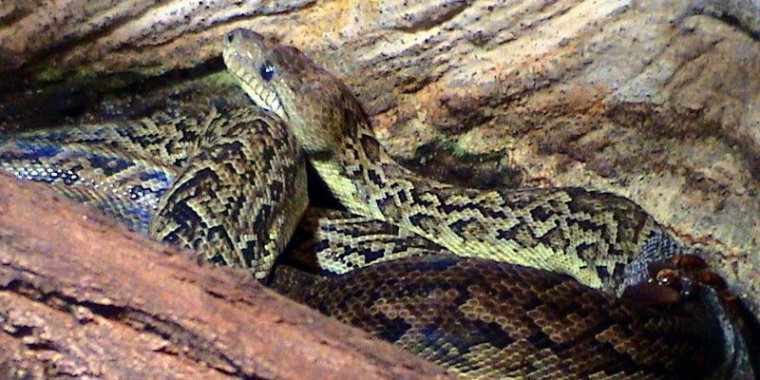| News / Science News |
Snakes Hunt in Groups, Study Suggests
One snake can be scary enough, but a new study suggests some of the slithering reptiles hunt for prey in groups.

Cuban boa. ![]()
Researchers from the University of Tennessee in Knoxville say the Cuban boa, the “largest native terrestrial predator” on the island they are named after, coordinate their hunts in the island’s bat caves.
Vladimir Dinets, who led the study, said the boas hang from the ceiling of cave entrances at dusk and dawn, when bats either enter or leave the cave. From that position, they are able to grab the bats in mid-air.
Dinets said the snakes “coordinated their positions in such a way that they formed a wall across the entrance. This made it difficult or impossible for the bats to pass without getting within striking distance of at least one boa.”
The hunts, he said, were always successful, and that the more snakes, the shorter amount of time is took each to grab a bat.
Observing snakes hunting is difficult, with only a few of the 3,650 snake species having been seen hunting in the wild.
"It is possible that coordinated hunting is not uncommon among snakes, but it will take a lot of very patient field research to find out," Dinets said.
Even the Cuban boa is getting harder to observe, because the snakes have been hunted for food and pets.
"I suspect that if their numbers in a cave fall, they can't hunt in groups anymore and might die out even if some of them don't get caught by hunters," Dinets said. "A few of these caves are in national parks, but there's a lot of poaching everywhere."
The study was published in the journal Animal Behavior and Cognition. (VOA)
YOU MAY ALSO LIKE





